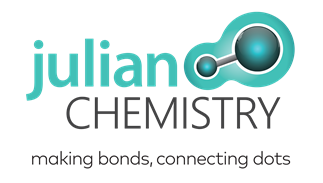6 Effective Tips on Scoring in H2 Chemistry Paper 1 (P1)

5 Ways to Stop Procrastinating and Start Focusing on Your Studies
August 24, 2020
Best Ways to Overcome Exam Stress and Ace the Test
November 3, 2020Getting an excellent result in H2 Chemistry Paper 1 necessitates some hard (and smart!) work.
Scoring excellent A-level results necessitates both memorisation and a good understanding of the learning material. While some of the questions can be answered correctly by just learning basic concepts, others demand the application of these concepts for the correct solution of a scientific problem.
At Julian Chemistry, we always focus on the practical and logical applications of the chemistry tuition curriculum. Our small classes, lucid explanations and a thorough focus on building scientific fundamentals can all come in handy when it comes to conquering P1.
To make the learning process even easier, we’ve come up with a list of six practical tips and suggestions everyone can follow in P1.
Always Skim Over the Entire Test Before Tackling a Specific Question
The best thing you can do after receiving the test is skim over all of the questions. Dedicate a few minutes to getting a better idea about what you’re going to be facing and the main challenges that would stem from the test topics.
By exploring the test in its entirety, you can move on to quickly answer the questions that you know. Once these are out of the way, you can use all of the remaining time to concentrate on the scientific topics and related inquiries that you find challenging.
Skimming and scanning are very effective techniques when you have a limited amount of time. Move your eyes quickly over the page and take a mental note of the scientific topics you’re going to be facing. You can practice the technique through your topical revision question pack. The more you practice, the faster you’ll get at quickly assessing just how much applicable knowledge you have.
Try the Hard-Start-Jump-to-Easy Technique
If you prefer an alternative approach, try Barbara Oakley’s Hard-Start-Jump-to-Easy technique.
In this approach, you start working on a difficult question first. Give it a few minutes and if you cannot pinpoint the correct answer in that amount of time, jump to an easier problem you can solve quickly.
This technique helps you concentrate on the most challenging questions first and it also eliminates mental blocks by jumping back and forth.
You know that you can easily get stuck on a question and have your mind going completely blank. If this happens, you’re not going to pinpoint the correct answer and you will also waste a ton of time.
It can be difficult to pace yourself and know what the reasonable amount of time to dedicate to a single science question is going to be. Hence, you may want to use a watch during your practice sessions to determine what an optimal timeframe is and when you’re starting to waste precious minutes.
RTQ2 (or Read the Question Twice)
Some questions seem pretty basic at first, which can trick you into making a preventable mistake.
A good approach towards scoring P1 is reading every single question twice.
The initial skimming and scanning will acquaint you with the topic. A more focused read the second time around will help you comprehend the specifics and the nuances of the inquiry itself.
Answering a question after skimming alone will make you look for an answer that you’ve formed a mental association with. Unless you read the question in its entirety, however, you could miss a tricky little twist at the end that will make your answer of preference the wrong one. Attention to detail is everything when you want to ensure academic excellence!
The Power of Elimination
Multiple choice questions provide you with a couple of additional opportunities for pinpointing the correct answer, even if you’re not 100 per cent confident.
There will always be a couple of choices that are blatantly incorrect. By eliminating those, you can focus on the remaining ones. Even if you have to make an educated guess (more on that technique below), you will still be boosting your chances of getting the correct answer.
The process of elimination saves time and it activates logical links in the brain that will eventually take you to the correct answer.
This strategy isn’t one you should be employing all the time. Going through elimination needs to be reserved for the instances when you cannot solve the problem with complete certainty.
Go Through Every Single Answer
Even if you believe that you have the correct answer, do go through the other options listed under the inquiry.
Again – this technique aims to help you spot trick questions you could have skimmed over the first time around.
Depending on the top specifics, the answer you feel is correct may not be the BEST one for the particular inquiry. Sometimes, you will have to put your analytical hat on instead of just trusting your initial response. This is especially important if you still have time and you’re wondering about a specific question.
Harness the Incredible of the Educated Guess
Educated guessing provides you with a last resort option when you cannot narrow the options down to just one correct answer.
Usually, this technique is employed alongside elimination.
If you are going to rely on educated guesses, leave that process to the end.
First, you should work on the problems and the questions that you’re familiar with. When these are out of the way, you’ll be left with the inquiries that puzzle you and leave you indecisive.
Now, do some elimination and get rid of the answers that don’t make sense. In a best case scenario, you will be left with just two choices. If you can make this happen, you’ll have a 50-50 chance of getting the correct answer by guessing.
Obviously, the educated guess is not a tactic to employ on multiple questions. When utilised sparingly and strategically, it can lead to much better results in the end. So, take a deep breath and read the question once again. You could come across some information that you didn’t spot the first time around – information that will help you eliminate at least one (preferably even more) of the incorrect choices.
You don’t need to be a scientific genius to do well in your A-levels. Taking enough time to acquaint yourself with the material and to do sample questions, however, will most definitely pay off.
At Julian Chemistry, we can help you prepare effectively for your A-levels Chemistry with our Tuition classes. Contact us today to learn more about the chemistry tutoring options we have to offer.




